Resources
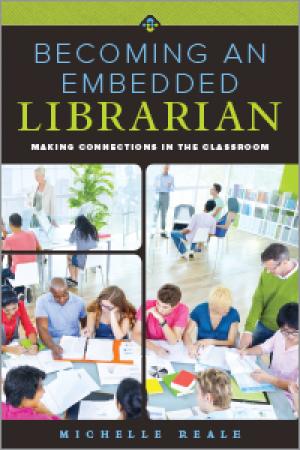
Click Here for Book Review Abstract: Embedded librarianship is “not one size fits all,” yet many books on the subject treat it in a cold, objective manner that doesn’t adequately communicate how becoming an embedded librarian actually works in the real world. Here, Reale shares her own university classroom experiences to offer a step-by-step primer for those contemplating the practice. Demystifying what can sometimes feel intimidating to academic librarians, this down to earth resource - defines what embedded librarianship is, and isn’t; - explains why being in the classroom is so important, and how it creates communities of learning; - hows how to clarify the role of the librarian in a classroom by being a “facilitator of process”; - offers strategies for relationship building, setting goals, and honing a teaching style; and - discusses embedded librarianship and branding. Readers will feel confident applying the lessons learned from Reale’s first-hand account to their own experiences both in and out of the classroom. (From the Publisher)
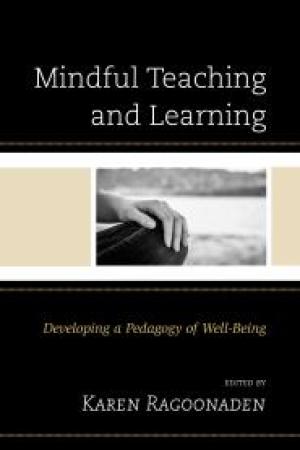
Click Here for Book Review Abstract: Mindful Teaching and Learning: Developing a Pedagogy of Well-Being features a community of scholar-practitioners from across disciplines, methodologies, and ideological perspectives exploring and examining contexts that support mindful teaching, mindful learning, and a pedagogy of well-being. Collectively, these chapters document and analyze the opportunities and challenges within pedagogical sites and discuss how the disposition of mindfulness can be nurtured and sustained in educational practice and praxis. Bolstered by the positive evidence-based standards emanating from clinical settings, mindfulness based training has spread into a variety of other fields like psychology, healthcare, and more recently, education. Within pedagogical environments, an emergent secular conception of mindfulness, under the auspices of educational psychologists like Langer (1987; 1997), Goleman, (2008), Lantieri (2008), Roeser, Skinner, Beers, and Jennings, (2012), and Schonert-Reichl and Lawlor (2010), is making headway. Consequently, Mindfulness Training (MT) resources have been applied to educational contexts in order to maximize the academic, emotional, physical, and psychological benefits provided by this mind-body approach to well-being. Acknowledging the increasing evidence base for the efficacy of mindfulness interventions as well as the elevated stress levels reported by many educators and their students, this book discusses how mindful practices, praxis, and research can inform and support pedagogy, curriculum, and leadership initiatives in higher education in the twenty-first century. Alongside the multitude of recent studies in the area of Mindfulness, contributors discuss their own experiences using Self-study, Contemplative pedagogy, Living Educational Theory, and Curriculum Inquiry. The content of this book examines ways in which to develop habits of mind and courses of action, as well as a curriculum of study that can support educators as they cultivate competencies for thriving and coping with the modern demands of being a teacher. (From the Publisher)
Contemplative Studies—meaning both standard “third-person” study of contemplative traditions in history and various cultures as well as actual “first-person” practice of contemplative exercises as part of coursework—is a new field in academia, and aspects have been controversial in some quarters, seen as not completely compatible with the rigorous “critical inquiry” of liberal arts study. While there are agendas within contemplative studies (CS) that go beyond the traditional questions and issues of liberal education, I want to argue that CS has, for a number of reasons, a place right at the heart of such inquiry. CS can be approached from many disciplines, including psychology, medicine, and neuroscience, as well as literature and visual, fine, and performing arts, but here I will focus on its place in liberal arts generally, and in religious studies specifically.
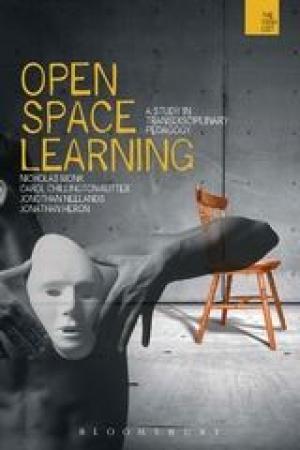
Click Here for Book Review> Abstract: Open-space Learning offers a unique resource to educators wishing to develop a workshop model of teaching and learning. The authors propose an embodied, performative mode of learning that challenges the primacy of the lecture and seminar model in higher education. Drawing on the expertise of the CAPITAL Centre (Creativity and Performance in Teaching and Learning) at the University of Warwick, they show how pedagogic techniques developed from the theatrical rehearsal room may be applied effectively across a wide range of disciplines. The book offers rich case-study materials, supplemented by video and documentary resources, available to readers electronically. These practical elements are supplemented by a discursive strand, which draws on the methods of thinkers such as Freire, Vygotsky and Kolb, to develop a formal theory around the notion of Open-space Learning. (From the Publisher)
The Center for Internationalization and Global Engagement has collected examples of policies, programs, surveys, and other resources according to the six aspects of the CIGE Model for Comprehensive Internationalization, and are provided as models for other colleges and universities as they pursue their internationalization goals.
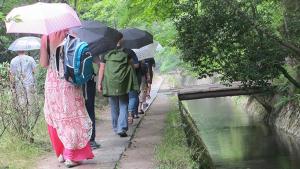
Journal Issue. Full text is available online.
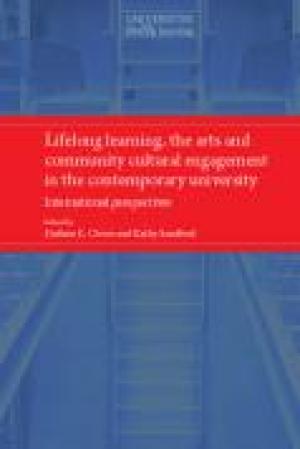
Click Here for Book Review Abstract: Lifelong learning, the arts, and community cultural engagement in the contemporary university maps the work of adult educators, teachers, researchers and graduate students from North America, Europe and Africa who use the arts in their university classroom teaching, their research and in service. It is written specifically for graduate students, and educators working in higher education, communities, schools, and practitioners who want to learn how to better integrate the arts in their practice to critically and creativity communicate, teach, make meaning, uncover, and involve. The book contextualises the place and role of the arts in society, adult education, higher education and knowledge creation, outlines current arts-based theories and methodologies and provides examples of visual and performing arts practices to critically and creatively see, explore, represent, learn and discover the potential of the human aesthetic dimension in higher education teaching and research. (From the Publisher)
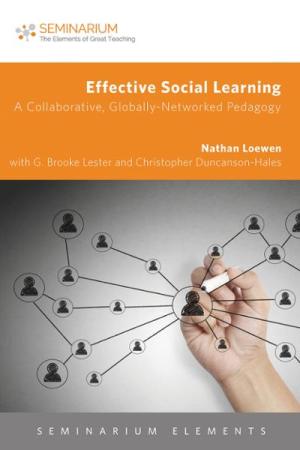
The ground of higher education is shifting, but learning ecosystems around the world have much more space than MOOCs and trendy online platforms can fill, and Loewen shows how professors have an indisputable pedagogical edge that gives them a crucial role to play in higher education. By adopting the collaborative pedagogical process in this book, professors can create effective social learning experiences that connect students to peers and professional colleagues in real time.   Loewen moves beyond surface questions about technology in the classroom to a problem best addressed by educators in bricks-and-mortar institutions: if students are social learners, how do we teach in a way that promotes actual dialogue for learning? Designing learning experiences that develop intercultural competencies puts the test to students’ social inclinations, and engagement with course material increases when it’s used to dig deeper into the specificities of their identity and social location. Loewen’s approach to interinstitutional collaborative teaching will be explored with examples and working templates for collaborative design of effective social learning experiences. This is done by collaborative dialogue with G. Brooke Lester and Christopher Duncanson-Hales. As a group, Loewen, Lester, and Duncanson-Hales create a text that extends pedagogical innovation in inspiring but practical ways. (From the Publisher)
This response explains three ways in which the preceding essays are a significant contribution to the study of study abroad, explores three additional issues, and makes three suggestions for future work on religious studies and study abroad. This response is published alongside of six other essays, comprising a special section of the journal (see Teaching Theology and Religion 18:1, January 2015).
Conservative (fundamentalist, evangelical) Christian students present a general theological worldview that often correlates with significant anxiety. In a foreign setting, the anxiety of conservative students, removed from their supportive infrastructure, can be considerably heightened. This structure of thinking and emotion presents distinctive challenges and opportunities. Drawing upon my work as a clinician and as a religion professor who conducted study abroad programs, I make suggestions for working effectively with conservative Christian students in study abroad contexts. Suggestions include predeparture, in-country, and post-trip strategies. Specific examples of conversations with students are provided to illustrate the challenges and strategies. This essay is published alongside of seven other essays, including a response from John Barbour, comprising a special section of the journal (see Teaching Theology and Religion 18:1, January 2015).